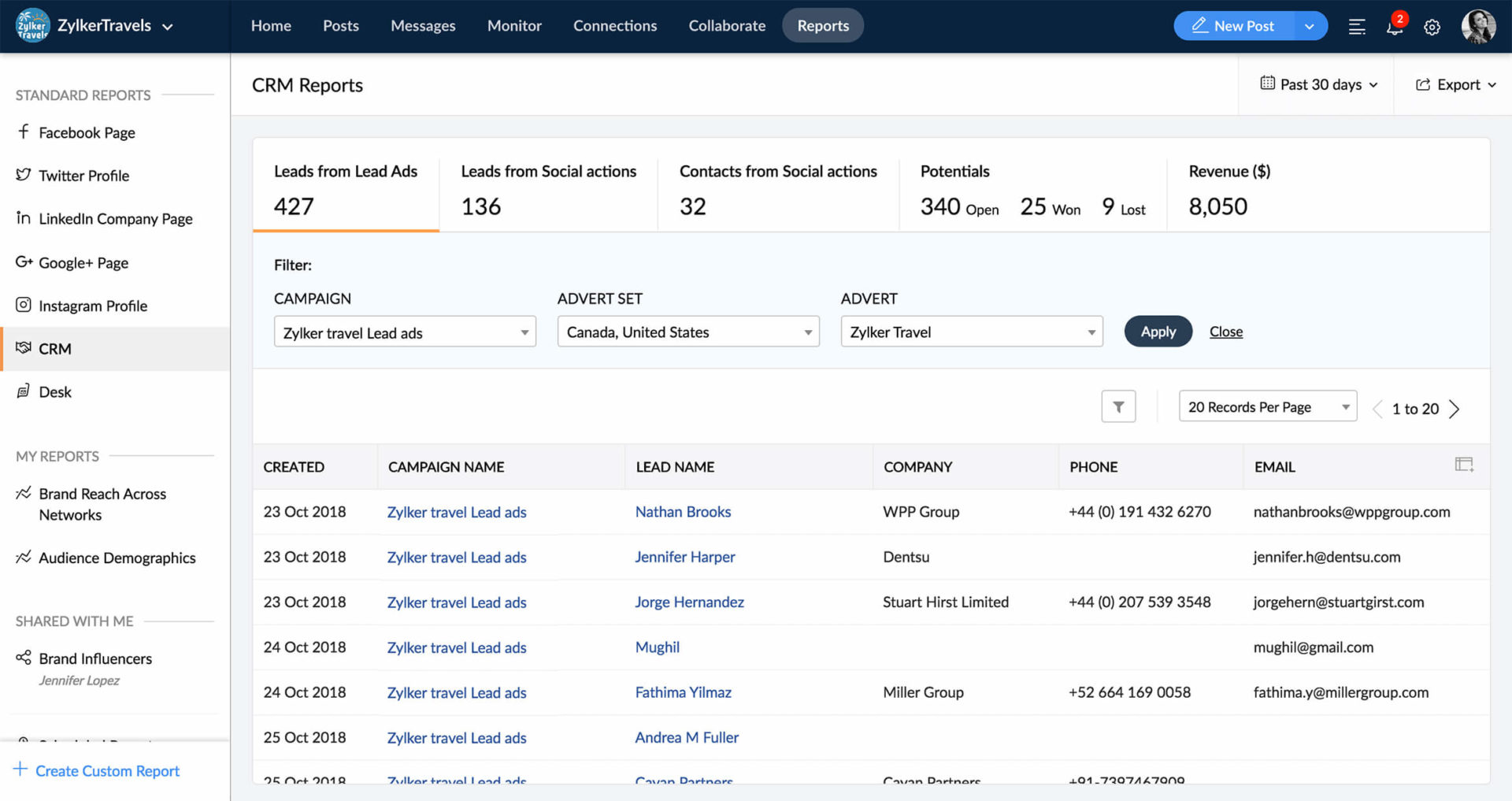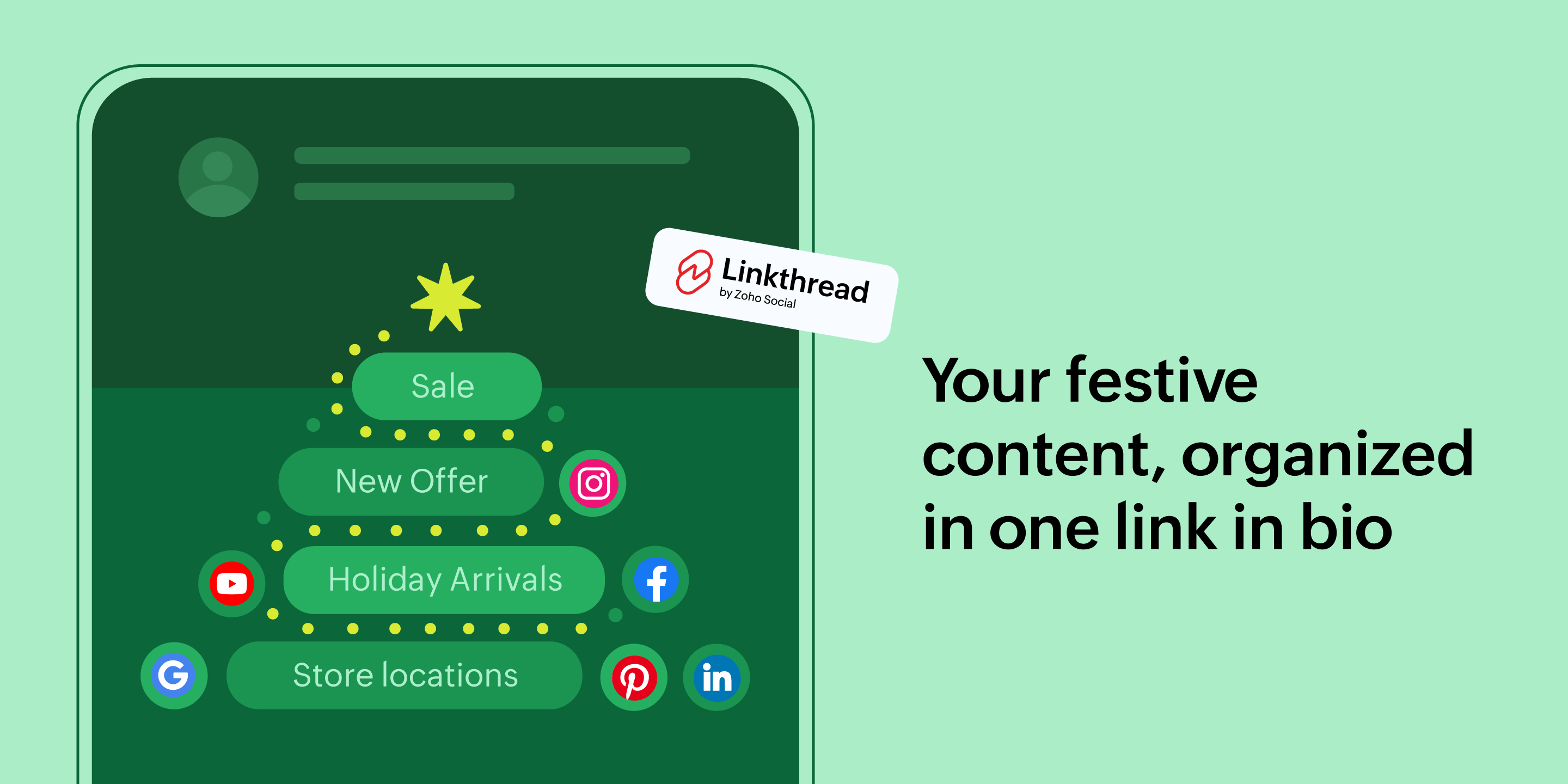The most important social media metrics for your brand
- Last Updated : August 17, 2023
- 5.8K Views
- 8 minutes Min Read

Successful marketing requires good data. You won’t know whether you’re making the right decisions or following the right strategies unless you’re able to measure your performance. From follower counts to ROI rates, every metric you measure will tell you something about your performance. And given the number of metrics available, it can be overwhelming. While certain metrics are consistently considered important, you’ll see new ones pop up every once a while, as well.
So which ones do you pick? Which ones are important for your brand? And what do these metrics really tell you? While there are some basic ones that all brands should keep an eye on, there are others that you might want to track, depending on the social media goals you’ve set for your brand. Before we take a look at what these metrics are, though, let’s first learn what social media metrics are, and why you should be tracking them.
Social media—goals and metrics
Social media metrics are standards of measurement that you use to determine how successful your social media campaigns are. Measuring the right metrics will tell you if you’re in line to achieve your social media goals, and can also give you pointers on things you should be focusing on.
But what are the right social media metrics for you? That depends on the social media goals that you’ve set for your brand. If you want to, say, raise awareness about your brand on social media, you might consider follower count as a metric to track. You can then go further and consider the rate at which your followers are growing, and compare that month-on-month to see if your measures are working. But to do this effectively, you’ll have to set your goals properly. Without having a well-defined target to meet, the social media metrics you track will be working in a vacuum, and you won’t really be able to tell whether you’re getting where you want to go. That’s why when you set goals, it’s recommended that you follow the SMART framework.
Specific: The more specific your goal is, the more sure you can be of the strategy you develop and the directions you take. This will make your goal a lot easier to achieve than setting a vague one. “Increase sales” is a better goal than “improve business.”
Measurable: Instead of having a goal like “increase sales,” try making it measurable. This will allow you to track the success of your campaigns a lot more accurately. For example, you could say “increase sales by 500 units.”
Achievable: When you set your goals, make sure you’re not setting something that’s impossible to achieve. Doing so will only set you up for failure.
Relevant: Always keep in mind that your social media activities don’t exist in a vacuum. You may want to increase your followers, but does that tie in with your overall business objectives? Always keep that in mind when you’re setting your goal.
Time-bound: And finally, keep your goals time-bound. Setting a deadline can help you prioritize your plans and keep your team on track.
If you’ve set your social media goals according to this framework, the relevant metrics you’ll need to follow will be evident. A goal to increase sales through social media will require you to track traffic from your website, and then the conversion rates. The actual results of your efforts—that you measure through these metrics—can be used to revise existing goals, or even set new ones. That’s why the relationship between social media goals and social media metrics can’t be understated.
Important social media metrics
Thankfully, the process of tracking these metrics isn’t difficult at all, as most social media channels have their own native analytics tools. If you have a Facebook page, you’ll be able to see this in your page’s Insights tab. Twitter has their own analytics, and on Instagram, switching your profile to a business account will give you access to their analytics.
But you don’t have to do it all natively for every channel—you could consider investing in a social media management tool. A lot of these tools come with analytics features that you can use to get a more customized, detailed view of your social media performance. You’ll even be able to schedule these reports for a set frequency so you don’t have to manually create them every time you want to take a look at the data.
Now that we know what metrics are, why you need to track them, and how they can help, let’s take a look at some of the most important metrics that you’ll need to track for your brand.
Engagement metrics
Engagement is the cornerstone of all social media activity. No matter what goal you’ve set for your brand on social media, you’ll need to track your engagement metrics. This measures how much your audience is interacting with your posts, in what way they’re interacting with your posts, and how often they do it.
There are different types of engagement to look at:
- Likes
- Shares/Retweets
- Comments
- Mentions
All of this can be used to calculate your engagement rate. Your engagement rate is the total number of engagements you’ve received, divided by the total reach—or impressions—the post had. A higher engagement rate will indicate that a higher number of people who see your content like what they’re seeing and are reacting to it. With this data, you can tell if your content is interesting or not, and whether you’ll need to switch things up.
It’s also a good idea to keep a tab on every individual component of engagement. You might share a picture that generated a lot of likes and had a healthy engagement rate. But if you used a CTA to generate shares or comments, and you notice that there’s not much of either, then that could mean your caption is weak and needs to be reworked, despite the high engagement rate for the post.
Awareness metrics
If your social media goals are more about spreading brand awareness, then awareness metrics are something you should be tracking. The main awareness metrics are impressions and reach.
It’s important to understand the distinction between these two terms. Simply put, your reach is the total potential viewers your content can have. This includes the followers of people who’ve shared your posts. Impressions are simply the number of times your post appears on someone’s feed. And it’s important to note that impressions don’t have to be unique viewers.
For example, if a page you follow shares a post, your profile would count as one person reached. But if a friend of yours shared the same post, you’d add two impressions to the post—one from the original publisher, and one from when your friend shared the content.
Impressions and reach can tell you a lot about the content you create. Reach will give you the potential audience size for your content. A higher reach means that a larger number of people are likely to see your content, and that’s good for spreading awareness about your brand. A higher number of impressions can also give your content the potential for better visibility. If a post appears four or five times on someone’s feed, it’s more likely that they’re going to pay attention to it.
However, neither reach nor impressions give you the full picture. Use these metrics to calculate your engagement rate, and you can find out even more information about your content. If you have a high number of impressions, but a low engagement rate, for example, then it could mean that your audience doesn’t find your content interesting enough to engage with, even despite seeing it multiple times on their feed.
You can also use reach to calculate the success of your campaigns. You’ll be able to find out how many people out of the total potential audience actually participated in your campaigns. And when used along with engagement metrics, awareness metrics can be extremely powerful for your brand.
Share of voice
Understanding the share of voice that you have on social media can tell you how well you’re doing on these channels, in comparison to your competitors. Share of voice quantifies the “noise” your brand makes on all relevant channels across a specified time period, and compares that with your competitors to establish the percentage of social media conversations that you “own.”
Since most of the conversations on social channels are public, this can actually be quite simple to do on a basic level. Using a social media monitoring tool, you’ll be able to track the number of mentions and conversations about your brand in a specific time frame—and you’ll be able to do the same for your competitors.
To calculate your social media share of voice:
- Add the total mentions/conversations about your brand and the conversations about your competitors.
- Divide the number of mentions/conversations about your brand with the total number you arrived at in step one.
- Multiply the result by 100, and you’ll get your percentage share of voice on social media.
It may also be a good idea to calculate the share of voice for your competitors to see how they’re all doing.
The goal here isn’t to maintain the highest share of voice at all points of time—that may not be possible in a industry with multiple competitors. You can, however, keep an eye on how the share of voice changes, and relate it to factors that caused the changes, for both you and your competitors. This information can help you make decisions while running other social media campaigns.
Return on investment (ROI)
Another important metric you might want to keep track of is your social media ROI. Like with any other campaign, your ROI is a good indicator of how profitable or efficient your campaign is. This has impacts outside of your social media campaigns, as well. With a healthy ROI, you’ll be able to convince your bosses and other stakeholders to invest more in social media, so you can run better campaigns and show better results.
Calculating your ROI can:
- Give you a clear picture of where your resources are being used most effectively
- Help you identify areas where your resources are being spent inefficiently
- Help you make decisions on where to focus additional resources, or where tactics have to be adjusted
To calculate ROI, you’ll need the monetary value of investment you’ve made on social media, and the monetary value of the return you’ve gotten from these activities. Sometimes, you can use a CRM-integrated social media tool that will help you track the lead from the specific network it was generated in, right up to the point of sale.
However, the goals that you set on social media can sometimes be intangible. You may want to see an increase in subscribers for your newsletter, for example, and this can’t directly be expressed in fiscal terms. This is where the real challenge lies for most social media marketers.
 However, calculating social media ROI doesn’t really have to be difficult—all you need to do is assign a monetary value based on additional information that you have. For a detailed discussion on this, take a look at our guide on calculating social media ROI.
However, calculating social media ROI doesn’t really have to be difficult—all you need to do is assign a monetary value based on additional information that you have. For a detailed discussion on this, take a look at our guide on calculating social media ROI.
There are various social media metrics available, and it can be overwhelming to keep an eye on all of them. The metrics we’ve discussed in this blog are important for most social media goals you may have, and will also give you an overall picture about the strength of your social media presence. With more time, and with more specific features, you may also need to keep track of more nuanced metrics. While you measure these metrics, also keep in mind that no one metric can give you an accurate picture of your presence. Usually, you’ll need to take all of these metrics together to get a holistic picture, and then make decisions accordingly.
And that’s all we’ve got for you today. Know of anything we missed, or have something you’d like to discuss with us? Leave a comment below, and we’ll be sure to get back to you ASAP!
 Vishal
VishalContent writer at Zoho Social, stand up comedian, and lover of dogs. I read a lot.



Comments(2)
A well-detailed article thanks for sharing this one.
Well said important factors regard to the branding strategy. Thanks a lot for the informative post.